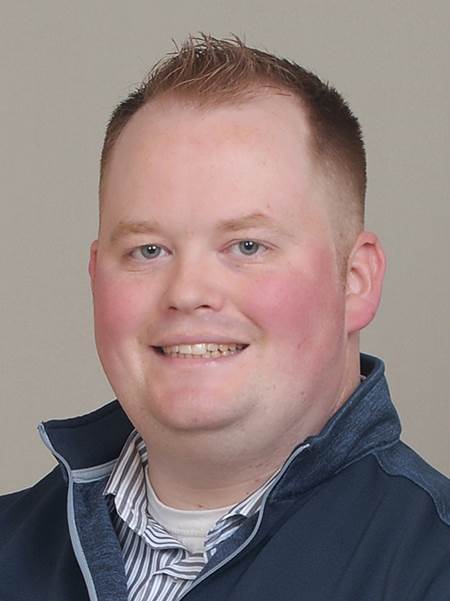“Do I even need to go through this again? Is it really that important to my career?
“How do I know what to do differently this time, when I can’t even remember what I did last time?
“It’s been over five years, and I don’t even remember some of the classes I took in engineering school, so how could I possibly clear enough cobwebs from my brain and pass this time?” 
As a civil aviation designer at Hanson, these were just a few of the thoughts and anxieties tumbling through my mind as I began studying to take the Principles and Practice of Engineering (P.E.) civil exam for a second time in 2022 — after 2,031 days, several job transitions and many thoughts of failure. I had passed my Fundamentals of Engineering (F.E.) civil exam on my first try, admittedly with minimal studying and no refresher course. I took a computer-based F.E. exam and had studied the only resource available at the time, so I felt well-prepared and could find the necessary formulas quickly. That gave me a glimmer of hope as I began thinking about studying for my computer-based P.E. civil exam more than five years after taking it paper-based and failing.
I knew I needed a precision approach. Thus, my study strategies differed greatly between the computer- and paper-based exams. The following tips helped me while I prepared for the computer-based exam:
Prepare a study plan
I didn’t make a detailed study plan when I first took the exam. I had a mental plan to study each topic, but I assumed, because I could have some resources and practice problem solutions with me during the paper-based exam, that they would be enough to help me pass. That strategy failed me, and I didn’t repeat it.
The second time, I planned. I gave myself about three months, covering one discipline per week. Week 1 was dedicated to water resources. I devoted Week 2 to drainage. During Week 3, I focused on construction. As I planned it, I had more weeks than study modules. I built in review and practice exams for three weeks leading up to the exam. And to trick myself into thinking positive, I wrote down my exam date and titled it “Pass Day.” I needed every mental trick I could think of to motivate myself.
Finally, the time came to execute the plan. I am married with three young boys. Did I mention I was working from home, and they were homeschooled at the time? My life is busy. If I was going to be successful, I had to be intentional. Reflecting on this experience, I learned a valuable lesson: falling behind on a plan does not equal failure. I started strong, but I eventually found it challenging. I didn’t give up; I adjusted. I learned the best time to study was 5 a.m. to 7 a.m., when the house was quiet. When I fell behind, I stuck with my plan. And, yes, the three weeks of review and practice exams that I had built into my schedule proved invaluable!
All resources available during the exam
The rules for taking the paper-based exam allowed for examinees to bring as many resources as they desired — everything from resource manuals to binders of practice problem solutions. At first, I didn’t know if this would be a good or bad change. I crammed as much as I could into my big, plastic tote. However, it was the resources I didn’t have that proved to be my downfall. I didn’t have all the pavement manuals I needed. I couldn’t afford them. A friend loaned me a few of the reference manuals he had, but I was lacking some.
One of the biggest advantages of the computer-based exam was the rule barring the use of outside resources. However, searchable resource manuals were available electronically for all test-takers during the computer-based exam, which leveled the playing field. This proved invaluable for me. I practiced how to use the manuals during my study time so I would be familiar with where to look in them for answers; just having them all available was a major benefit.
Eat a well-balanced diet
Eating a well-balanced diet on test day was helpful. The first time I took the test, I did not pack a full lunch. I only brought a few snack bars. Because of the amount of mental effort I exerted, along with my lack of a well-balanced lunch, I got a headache during my afternoon session and was unable to focus.
The second time, I ate a nutritious breakfast and packed a well-balanced lunch. I made a large salad topped with shredded chicken, avocado slices and nuts. I also packed plenty of water and stayed hydrated before and during the exam. Finally, I packed what I like to consider my “secret sauce” — my favorite cinnamon candies. I have recently discovered that cinnamon candies help me with energy and focus. I noticed a considerable difference when I went back for the afternoon portion of the exam. I had to read the first question a few times, but then I felt the cinnamon kick in and help me refocus. After that, I felt a boost of confidence and alertness that carried me through the afternoon!
Finding the courage to try again was the biggest challenge of retaking the P.E. exam. But making a plan and changing my approach guided me through the process and led to ultimate success.
Kyle Dorf is an aviation civil designer (and proud P.E.) at Hanson’s St. Charles, Missouri, office who can be reached at kdorf@hanson-inc.com.